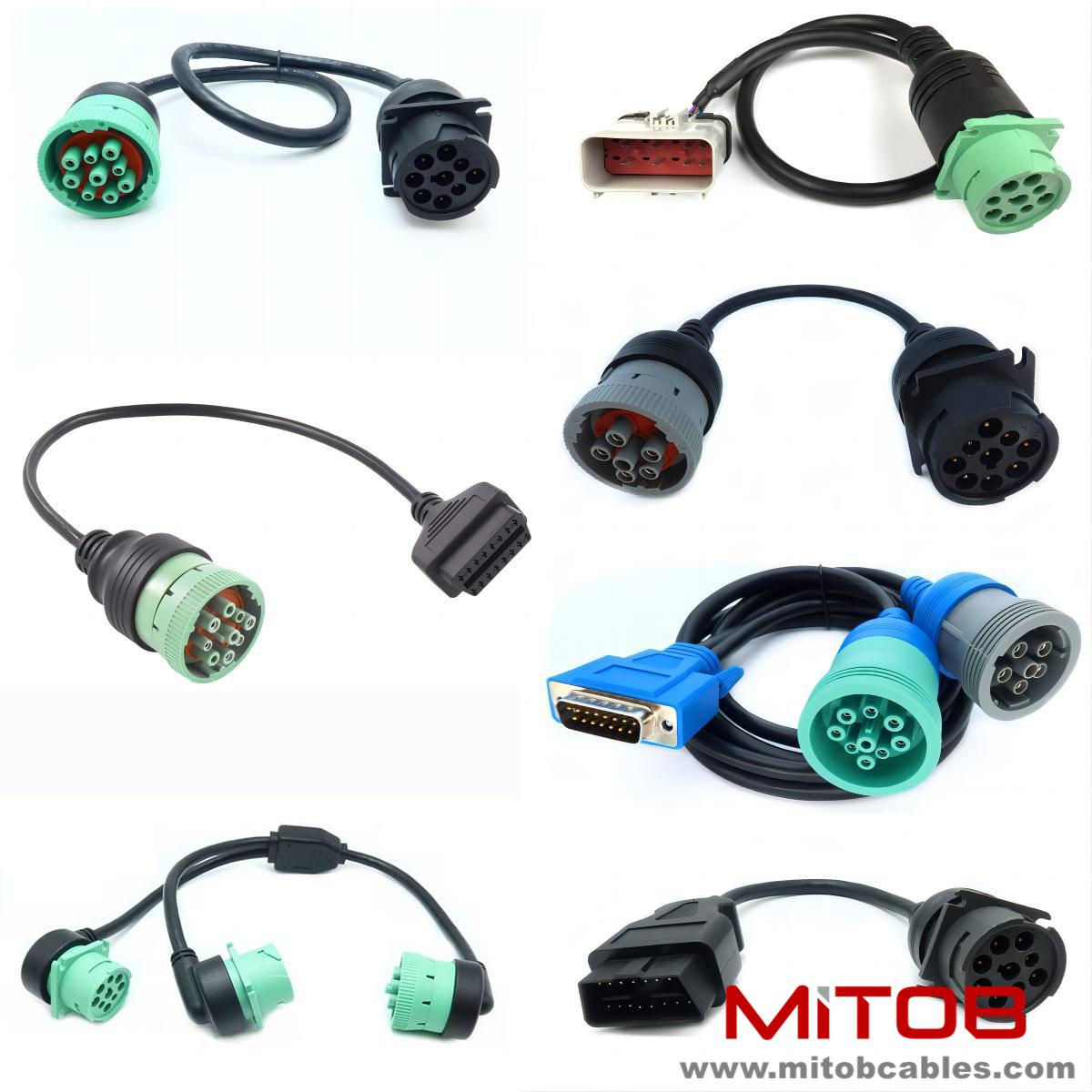Introduce the working principle of OBD2 to J1939 cable
The OBD2 to J1939 cable is a device used to connect two different vehicle communication protocol systems. Its working principle is based on protocol conversion technology and mainly includes the following aspects:
Protocol parsing and identification: OBD2 and J1939 are both communication protocols in vehicle electronic systems. OBD2 is mainly used for passenger cars. It monitors various systems and components of the vehicle, such as the engine, emission control system, etc., to obtain real-time operating status information of the vehicle, and stores fault information in the memory of the powertrain control module. Fault codes can be read through specific programs. J1939 is mainly used in large vehicles such as commercial vehicles and construction machinery, responsible for connecting the electronic control unit (ECU) of key components such as the engine, transmission, and braking system of the vehicle, achieving efficient communication between various systems. The chip or circuit built into the OBD2 to J1939 cable can recognize these two protocols. When the cable is connected to the OBD2 interface and J1939 interface, it first parses the data protocol from the OBD2 system to understand the vehicle information contained therein, such as engine speed, vehicle speed, fault codes, etc. At the same time, it will also identify the J1939 protocol, clarify its data format and transmission rules.

Data conversion and reassembly: Based on the parsing protocol, cables will convert and reassemble data. Due to differences in data format, encoding method, and information meaning between OBD2 and J1939 protocols, for example, OBD2 data may represent engine speed in a specific byte order and encoding method, while J1939 protocol has different representation methods. The chip or circuit in the cable will re encode and convert the parsed OBD2 data into byte order according to the requirements of the J1939 protocol, making it conform to the format of the J1939 protocol. For data transmission from J1939 system to OBD2 system, a similar reverse conversion operation will also be performed to ensure that the data can be correctly recognized and processed by the target system.
Data transmission and interaction: After completing data conversion, the cable will establish a data transmission channel between the OBD2 system and the J1939 system. It will send the converted data to the target system accurately and without error according to the transmission rules of the corresponding protocol. For example, in vehicle maintenance scenarios, maintenance personnel can use universal OBD2 diagnostic equipment to diagnose faults in commercial vehicles that originally only supported J1939 communication by connecting OBD2 to J1939 cables. At this point, the cable converts the fault information and other data in the commercial vehicle J1939 system into a format that the OBD2 device can understand, and transmits it to the OBD2 diagnostic device, achieving data exchange between different protocol systems.
Through the above working principle, the OBD2 to J1939 cable breaks down the barriers between the two communication standards, enabling effective data communication and interaction between electronic systems of different types of vehicles, playing an important role in fields such as automotive maintenance, inspection, and vehicle data monitoring.
Contact: Kevin
Phone: 0086-18823374992
E-mail: kevin@mitobcable.com
Whatsapp:
Add: Bld B2, Floor7 , Xinghe Zhongkai AI Industrial Park, Zhongkai High-tech Zone, Huizhou,China